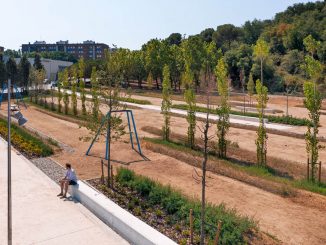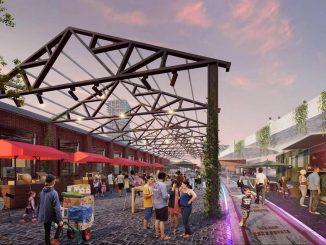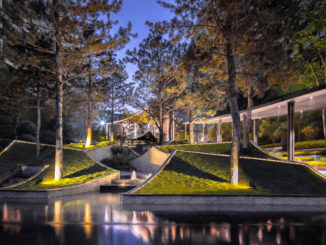Eelgrass Aqua-pelago: A Symbiosis of Conservation and Production
Winner of the Merit Award in the 2021 WLA Awards – Student – Concept Design category
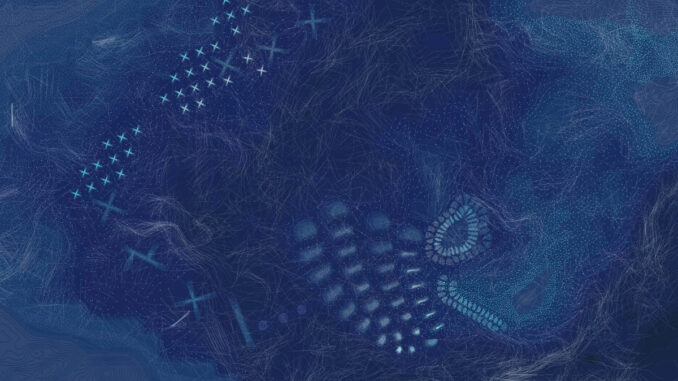
This is a landscape framework of dynamic ecological transition through the lens of eelgrass beds.
Eelgrass bed is the most significant coastal ecology in Buzzards Bay that provides shellfish populations with spawning and nursery grounds. However, since the 1870s, fishers in New Bedford are widely using harvesting technology called scallop dredging, which destroyed all the biodiversity and habitat structure. The current fishing industry is unsustainable because its economic structure is exclusively based on the technology that harms the main primary ecological component in Buzzards Bay‘s seabed.
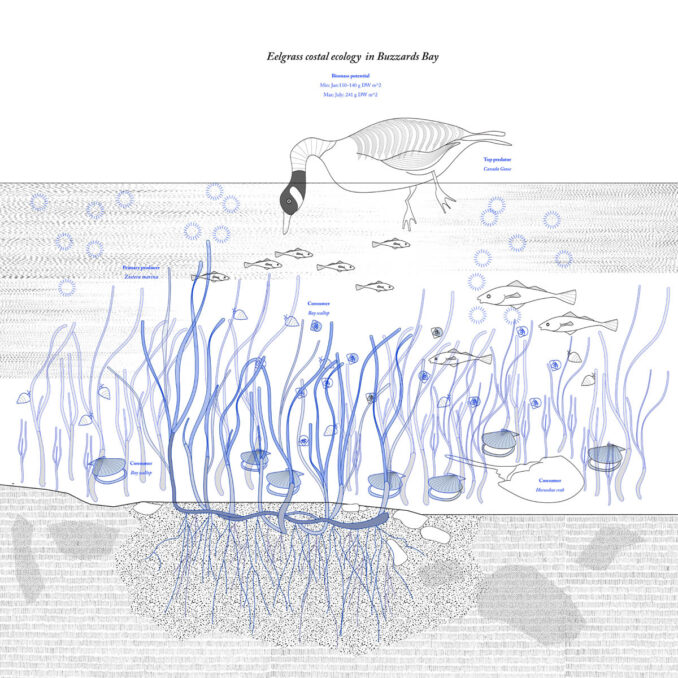
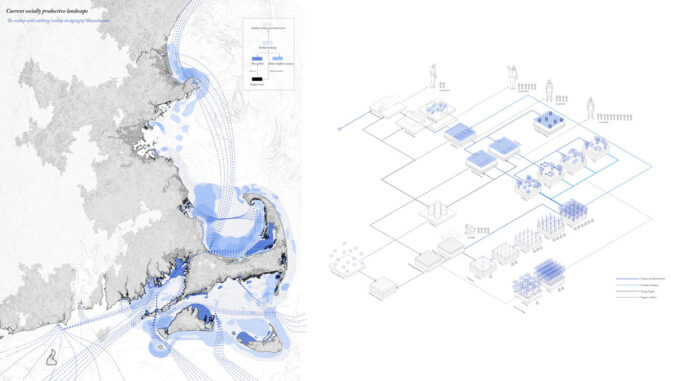
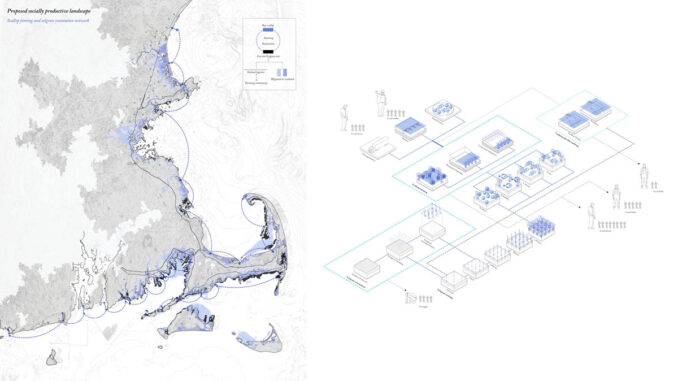
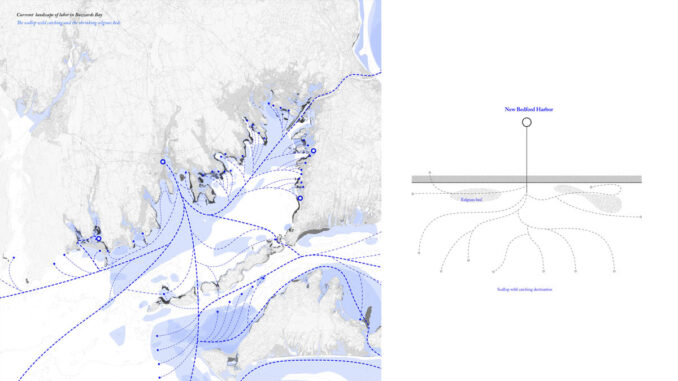
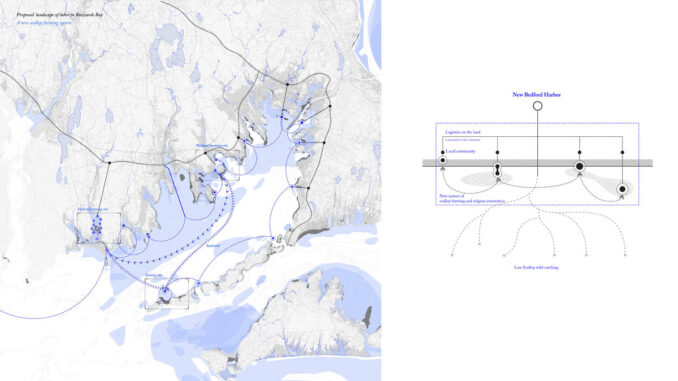
A new metabolism of conservation and production is necessary for the ecology of eelgrass, scallop, and society. This project intends to propose a hybrid landscape of labor with three modules: eelgrass restoration, scallop farming, and hybrid farming, which can gradually take the place of wild-catching labor.
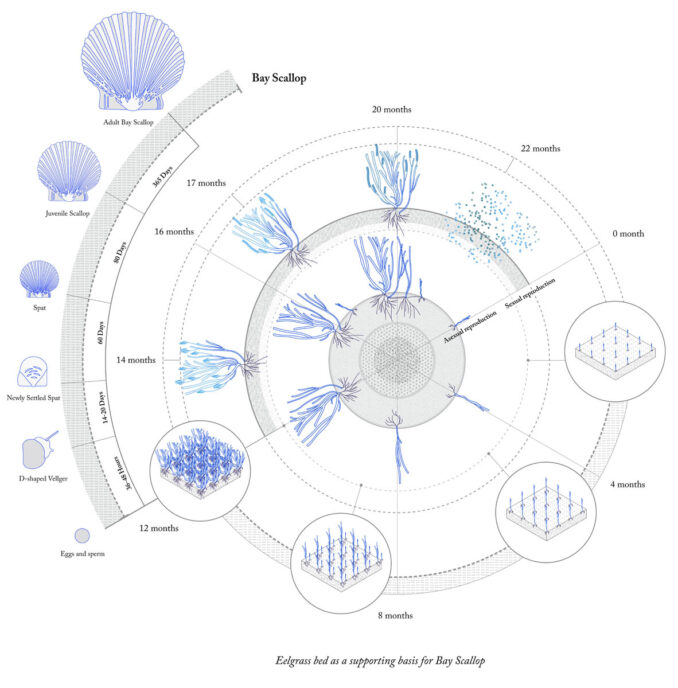
There are three interconnected landscapes of labor in response to the new structure. They are measured by the relative location of the land and their character within the spectrum of conservation and production. They rely on each other on material flows: The testing site works as an eelgrass seed bank and provides seeding and cultivating resources for other sites. The wetland farming sites take advantage of vast marshes and become a nursery for scallop hatching and growing. While scallops mature, they can be transported to hybrid farming sites as adults, taking advantage of the farm products transportation network.
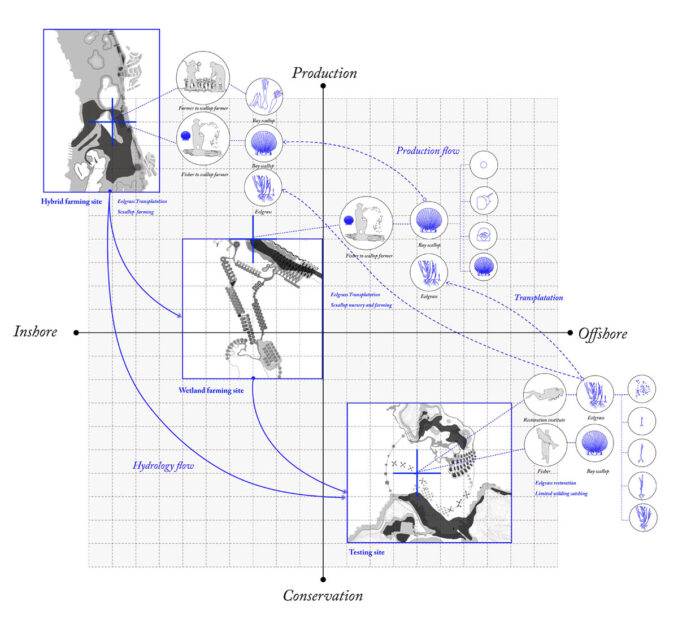
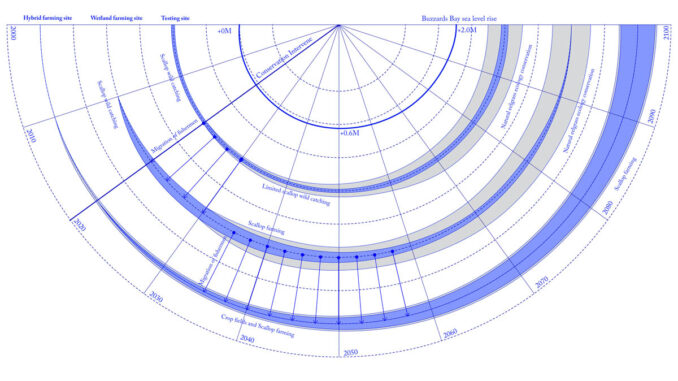
The three landscapes as an ecological mechanism are also anticipated to adapt to the future change of the sea level rise, water temperature change, and agricultural transition. The testing site seeks to become a more stable nursery. The wetland farming site will gradually become a natural marine ecology. The aquaculture in the hybrid farming site will gradually take the place of agriculture. They are integrated into one dynamic ecology.
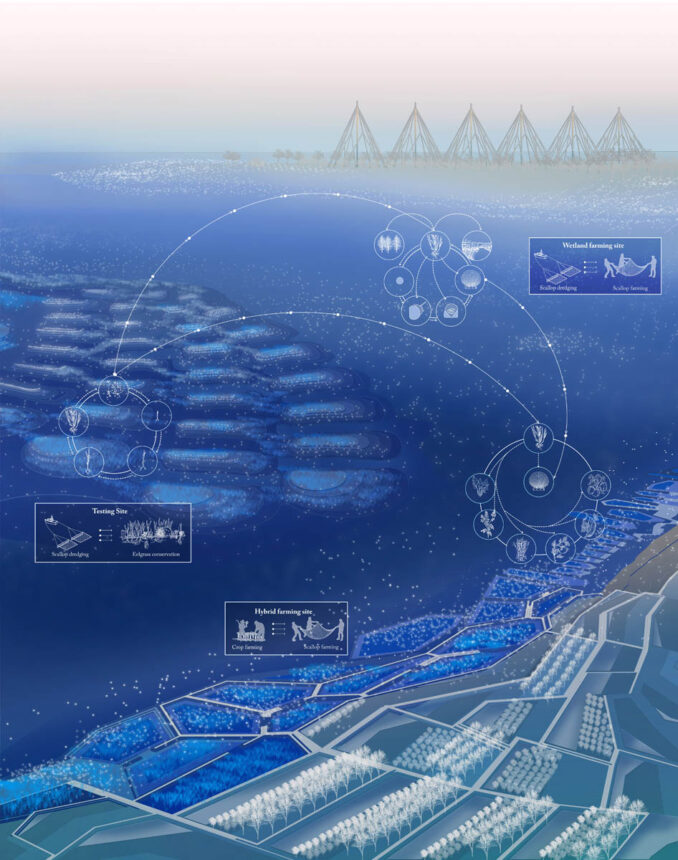
The testing site is located on a shrinking eelgrass bed far from the coast. In response to the complexity of the formation of healthy eelgrass beds, the proposed landforms as nurseries are in different shapes to explore a way to restore the healthiest eelgrass ecology. The eelgrass beds can extend and connect with the nearby ones consequently constructed a Porous structure.
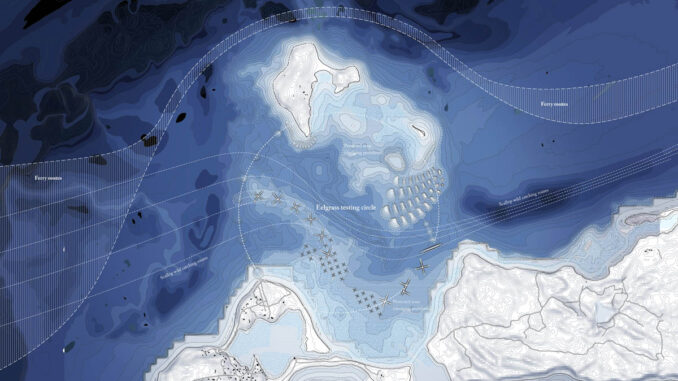
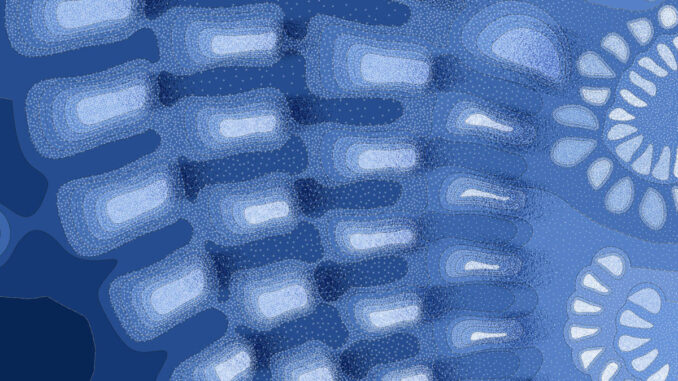

The Wetland Farming site explores the functionality of a scallop farming mechanism. The form follows the functionality of scallop farming: Two main canals are connecting all the farming units; the landforms of farming units in different scales and depth to raise bay scallops in all life stages.
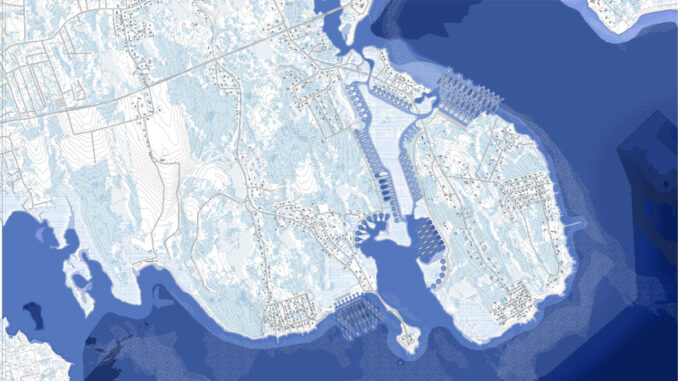
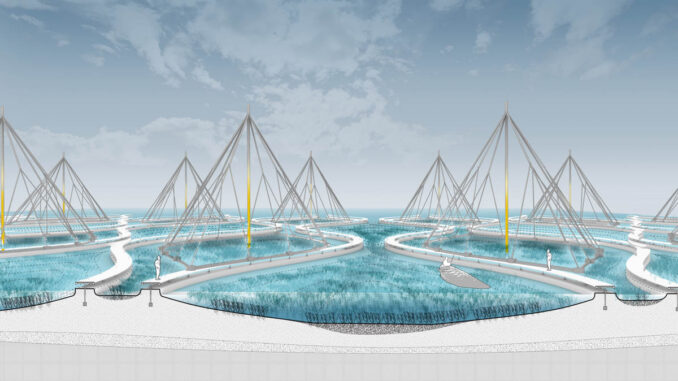
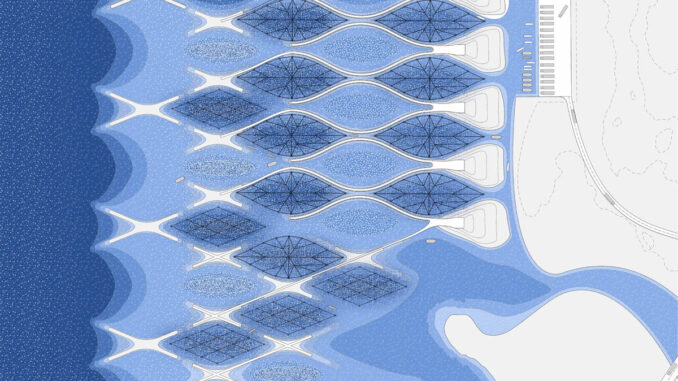
The hybrid farming site anticipates the risk of sea-level rise in the low land farming community. So, it Seeks to apply eelgrass aquaculture which gradually takes the place of agriculture. respect the existing land ownership and try to manage the water flow of the watershed for healthier vegetation growth.
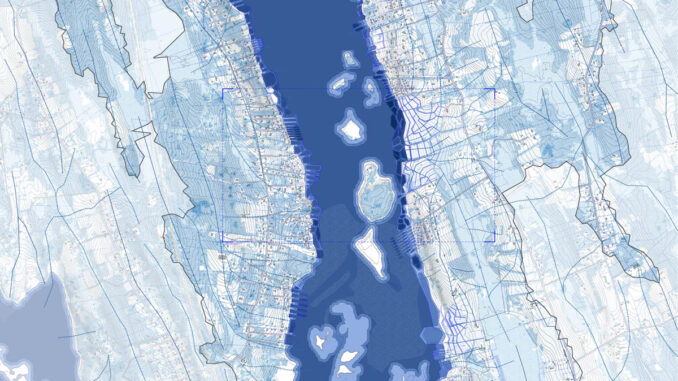
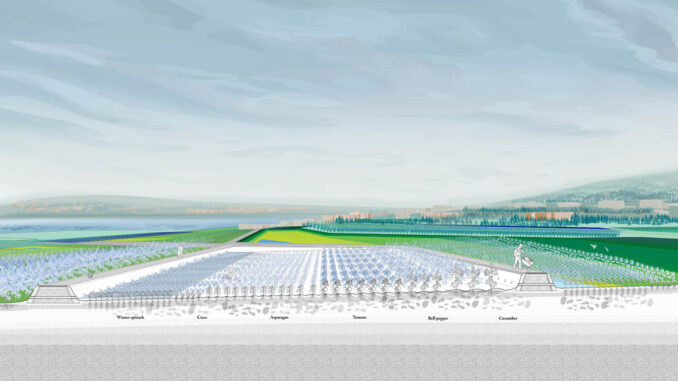
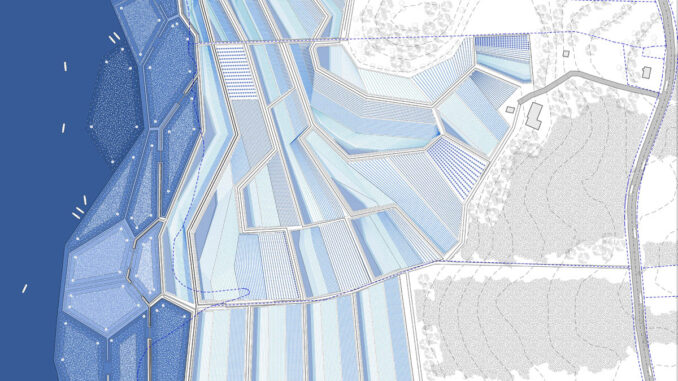
The project of the eelgrass aqua-pelago seeks to find a new model to activate a new aquacultural politics and ecology that all human and non-human agents engaged in and construct a catalyst for future change.
Eelgrass Aqua-pelago: A Symbiosis of Conservation and Production
Student: Liwei Shen, Harvard Graduate School of Design
Supervisor: Sergio Lopez-Pineiro
Image Credits: Liwei Shen

